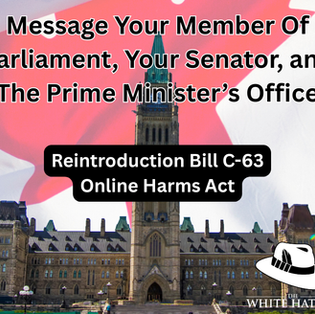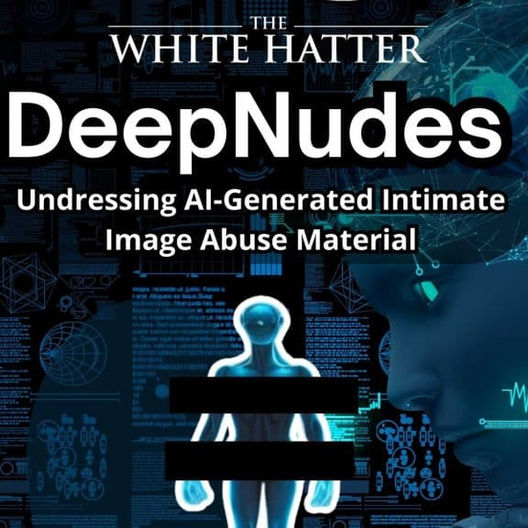Why Technology Becomes the Target in the Aftermath of Tragedy
- The White Hatter

- Sep 16
- 5 min read

When tragedy strikes, whether it’s a school shooting or the assassination of a popular or controversial figure, the very first question society asks is “why?” We want to understand the reasons behind the violence in the hope that, by identifying them, we can prevent the next incident from happening. It’s an understandable reaction. The search for explanations brings both comfort and a sense of control when faced with events that feel senseless.
Over the past several weeks, heartbreaking deadly events in the United States have once again ignited public debate about youth, teens, and their relationship with technology, the internet, social media, and online gaming. In moments of fear and grief, it is not uncommon to look for something, or someone, to blame. This time, as in many before, phones, social media platforms, and video games are once again being cast as the primary culprits. In moments of grief and fear, people often reach for something tangible to blame, and in today’s world, that “something” is often technology combined with political affiliation.
It is absolutely true that technology can act as an amplifier. Over the weekend, we published a three-part series examining how online platforms can amplify and magnify radical ideology, turning fringe voices into seemingly dominant narratives. (1)(2)(3) On Monday, we wrote about “conflict entrepreneurs”, individuals and groups who deliberately exploit online outrage for profit. (4) These dynamics are real and concerning, but they are only part of the bigger picture.
What is also emerging now is a call from some groups and politicians to treat technology itself as the root of the problem. We are hearing social media described as a “cancer” on society. We are hearing calls for people to “log off,” “touch grass,” and “hug loved ones” as though such steps alone could dismantle the complex causes of violence. However, here are but a couple of examples of mass shootings and political assassination that happened pre-internet;
Ronald Reagan – 1981 Shot and seriously wounded by John Hinckley Jr.; survived after surgery.
McDonald’s, San Ysidro, California – 1984 James Huberty killed 21 people and wounded 19 others in a mass shooting at a McDonald’s restaurant.
Edmond, Oklahoma – 1986 Patrick Sherrill, a postal worker, killed 14 co-workers and injured 6 others in what became known as part of the “going postal” wave of workplace shootings.
Cleveland Elementary, Stockton, California – 1989 Patrick Purdy killed 5 children and wounded 32.
École Polytechnique massacre (Montreal, Canada 1989) Marc Lépine entered the École Polytechnique engineering school in Montréal. He separated male and female students, told them “you’re all a bunch of feminists, and I hate feminists,” and then shot female students. He killed 14 women and injured 10 others
Luby’s Cafeteria, Killeen, Texas – 1991 George Hennard killed 23 and wounded 27 before killing himself.
Concordia University massacre (Montreal, Canada) 1992, Valery Fabrikant, an associate professor in the Mechanical Engineering Department, opened fire on staff and faculty at Concordia University. Four people were killed, one was wounded.
This history shows that mass shootings and political assassinations long predate the internet, social media, or online gaming. Their roots lie in social, political, and personal factors such as mental illness, misogyny, ideology, racism, workplace stress, and access to firearms. While technology today can certainly amplify awareness, accelerate radicalization, and increase the risk of copycat behaviour, the phenomenon itself is much older and global in scope that just the internet and technology being the cause.
Suggesting that simply “logging off,’ “touching grass”, or “hugging loved ones”, will stop today’s acts of violence is a form of flawed reasoning, yet it’s an idea that can be tempting to latch onto and leverage given the increased heated debate surrounding youth and their use of technology.
While we agree that there is wisdom in encouraging a balanced use of technology, these kinds of sweeping claims often morph into calls to ban youth from technology altogether.
At The White Hatter, our position has always been clear - technology, the internet, and social media are not inherently harmful. In fact, for the vast majority of youth and teens, they are tools that build community, spread knowledge, and create opportunities for connection that were once unimaginable. Online platforms have helped families stay in touch across continents, allowed marginalized voices to be heard, and given young people access to information and resources that previous generations could only dream of.
That said, these same tools can be manipulated and weaponized. For some, they become avenues for outrage, controversy, and division. Recognizing both realities is important. What matters is not the technology itself, but how it is used, and how prepared our youth are to navigate it.
Calls to ban technology from youth and teens may sound like decisive action, but history and research show that prohibition rarely solves the problems it aims to address. Instead, it creates new ones such as:
It drives harmful conversations underground.
If young people are banned from mainstream platforms, they don’t simply stop being curious or seeking community. Instead, they migrate to less visible spaces, private messaging apps, encrypted servers, burner devices, or fringe platforms, where harmful content is even harder for parents, educators, and law enforcement to detect.
It stunts digital literacy.
By removing technology, we deny youth the chance to practice the very skills they need to recognize misinformation, question manipulative tactics, and resist extremist narratives. Without real world digital experience, they enter adulthood unprepared for the online world they will inevitably inherit.
It can embolden extremist voices.
Bans reinforce the narrative extremists often use, that being society is trying to silence or control young people. This “us versus them” framing can make radical voices feel more attractive, not less, particularly to youth who are already frustrated or searching for belonging.
It punishes the majority for the actions of a few.
Most young people use technology responsibly, to connect with friends, explore interests, and learn. Stripping them of those opportunities because of the harmful actions of a small minority not only feels unfair but can damage trust between youth and adults.
Minimizing risk lies not in prohibition, but in education, mentorship, and balance. We need to equip young people with the tools to think critically, engage respectfully, and recognize when technology is being used to manipulate or divide. This requires parents, caregivers, and educators to be active guides, not passive bystanders. It also requires schools and communities to prioritize digital literacy as a core life skill, just as essential as reading or math.
Yes, tragedies will continue to spark debates about causes and prevention, and technology will remain part of that conversation as it should. However, we must resist the temptation to treat banning as a quick fix. The ugliness we see online will not disappear if we simply take phones and technology away. If anything, it will flourish in the shadows.
Violence, bullying, radicalization, or harmful behaviour usually stem from a messy mix of social, psychological, and cultural factors. That’s harder to explain and harder to fix. Blaming technology offers a simple, one-line explanation that feels emotionally satisfying, especially in the aftermath of tragedy. Technology becomes the lightning rod because it’s visible, new, simple to blame, media-friendly, and partly complicit as an amplifier. But focusing only on tech risks ignoring the much deeper social and cultural roots of violent behaviour.
What will make a difference is building resilience, helping our kids see through the tactics of conflict entrepreneurs, understand the mechanics of algorithms, and recognize that outrage is a product being sold to them. By doing this, we don’t just protect them from harm, we empower them to be the thoughtful, engaged citizens our digital future desperately needs.
Digital Food For Thought
The White Hatter
Facts Not Fear, Facts Not Emotions, Enlighten Not Frighten, Know Tech Not No Tech
References:














